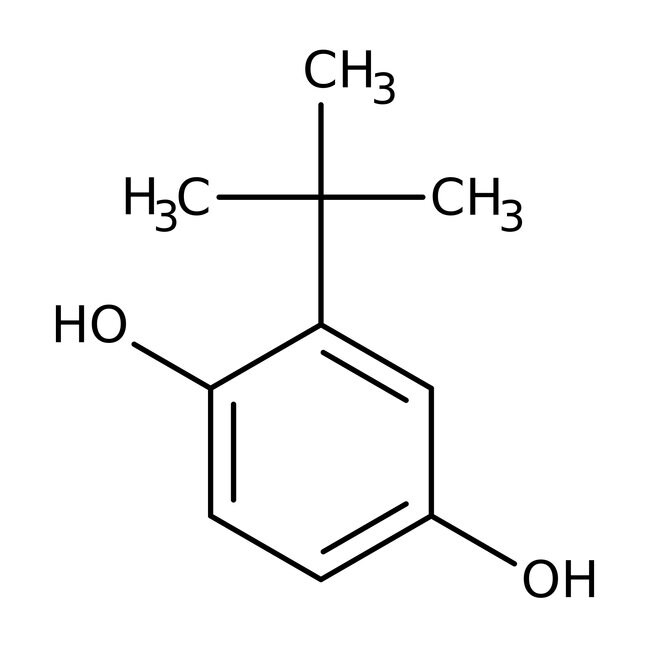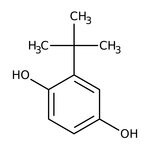Search Thermo Fisher Scientific
tert-Butylhydrochinon 97 %, Thermo Scientific Chemicals



tert-Butylhydrochinon 97 %, Thermo Scientific Chemicals
Chemikalien-Kennzeichnungen
Spezifikationen
Beschreibung
This Thermo Scientific Chemicals brand product was originally part of the Alfa Aesar product portfolio. Some documentation and label information may refer to the legacy brand. The original Alfa Aesar product / item code or SKU reference has not changed as a part of the brand transition to Thermo Scientific Chemicals.
TBHQ wurde zur Untersuchung der Inaktivierung von barotoleranten Stämmen von Listeria monocytogenes und Escherichia coli verwendet. Umweltfreundliche Elektrodenmaterialien für Superkondensatoren wurden durch die Beschichtung der Oberfläche von Graphen-Nanosheets mit TBHQ erreicht. TBHQ wird häufig als Konservierungsmittel für Lebensmittel verwendet. Hemmt die oxidative Ranzigkeit in gefrorenen gekochten Fischflocken durch tert-Butylhydrochinon. Die Aktivierung des nukleären Faktor E2-bezogenen Faktors 2-abhängigen Antioxidans-Response-Elements erfolgt durch tert-Butylhydrochinone, das bevorzugt in Astrozyt-Zuständen auftritt.
Löslichkeit
Schwer löslich in Wasser (10 g/l).
Hinweise
Kühl lagern. Behälter an einem trockenen und gut belüfteten Ort dicht verschlossen halten. Von starken Oxidationsmitteln fernhalten.
Abbildungen
Dokumente und Downloads
Zertifikate
Häufig gestellte Fragen (FAQ)
Zitierungen und Referenzen
Sicherheit und Handhabung
Classification of the substance or mixture
CLP classification - Regulation(EC) No 1272/2008
Label Elements
Signal Word
Warning
Hazard Statements
H302 + H312 - Harmful if swallowed or in contact with skin
H315 - Causes skin irritation
H317 - May cause an allergic skin reaction
H319 - Causes serious eye irritation
H335 - May cause respiratory irritation
H410 - Very toxic to aquatic life with long lasting effects
Precautionary Statements
P261 - Avoid breathing dust/fume/gas/mist/vapors/spray
P273 - Avoid release to the environment
P301 + P312 - IF SWALLOWED: Call a POISON CENTER or doctor/physician if you feel unwell
P305 + P351 + P338 - IF IN EYES: Rinse cautiously with water for several minutes. Remove contact lenses, if present and easy to do. Continue rinsing
P280 - Wear protective gloves/protective clothing/eye protection/face protection
P302 + P352 - IF ON SKIN: Wash with plenty of soap and water